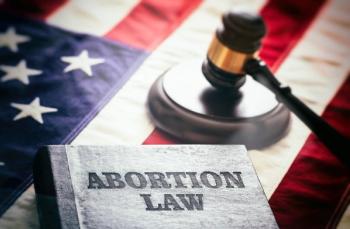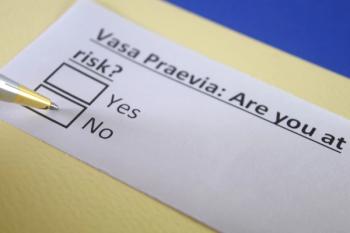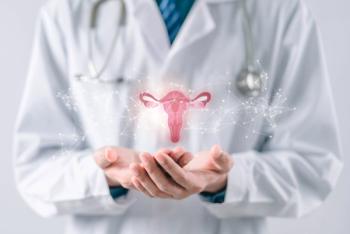
Medical marijuana: An oxymoron and a risk to fetuses
It's never appropriate in pregnancy, says our editor in chief.
Dr Lockwood, editor in chief, is Senior Vice President, USF Health, and Dean, Morsani College of Medicine, University of South Florida, Tampa. He can be reached at
In a time marked by a conservative lurch of the American electorate, and mounting state and federal legislative efforts to restrict access to family planning, voting, and union collective bargaining, there has been a paradoxical nationwide loosening of laws proscribing marijuana use. Twenty-eight states and the District of Columbia have now decriminalized personal marijuana possession. Moreover, the percent of US adults who perceive great risk from marijuana usage has declined from 51.7% in 2003 to 33.3% in 2014.1 Interestingly, Americans have not only become increasingly inured to potential risks, they have also enthusiastically embraced putative “medical” uses of cannabis.
Indeed, without substantive scientific evidence for their action, 29 states and the District of Columbia have now legalized medical marijuana.2 My own state of Florida-which voted for Donald Trump, returned a large GOP majority to the state legislature, and has a Republican Governor-enthusiastically passed a medical marijuana referendum this past November (6.5 million votes in favor vs 4.6 million against). Ironically, the biggest supporters of the pro-cannabis referendum were reliably conservative farmers, tobacco interests, and land developers, all of whom stood to gain financially from the plant’s cultivation. While aging hippies and libertarians may be heartened by this trend, obstetricians should be concerned.
Efficacy of medical marijuana
There is de minimus evidence supporting the pharmacological value of cannabis. Whiting and associates recently conducted a systematic review and meta-analysis of studies examining the risks and benefits of cannabinoid therapies.3 Of 79 trials identified, only 4 were judged to be at low risk of bias. Compared with placebo, marijuana resulted in a greater complete nausea and vomiting response among those undergoing chemotherapy with an odds ratio (OR) of 3.82 (95% CI: 1.55–9.42; 3 trials). Among chronic pain patients, the average number of patients reporting a ≥ 30% reduction in pain was slightly greater with cannabinoids than with placebo (OR, 1.41; 95% CI: 0.99–2.00; 8 trials). However, common side effects included dizziness, dry mouth, fatigue, somnolence, euphoria, disorientation, drowsiness, confusion, loss of balance, hallucination and, interestingly enough, nausea and vomiting. Given the excellent new antiemetics on the market and the myriad of analgesics, these “benefits” are hardly notable. Moreover, cannabis did not reduce rates of depression or improve intraocular pressure among glaucoma patients. At best these studies suggest that additional trials may be warranted in highly select populations but they certainly do not support the sale of this drug for any legitimate pharmaceutical purpose.
Marijuana use in pregnancy
“Fake news” is not limited to politics, and it is not surprising that the Internet has attracted advocates of marijuana use in pregnancy4 given its modest antiemetic effects. Of course such “endorsements” are hardly needed; cannabis is the illicit drug most commonly used in pregnancy. Brown and associates, analyzing National Survey on Drug Use and Health data from 2002 through 2014, reported that “past-month” marijuana use increased among pregnant women from 2.4% (95% CI: 1.8%–3.0%) in 2002 to 3.8% (95% CI: 2.9%–5.2%) in 2014.5 Use during the “past year” was 11.6% (95% CI: 9.8%–13.8%) in 2014. Equally concerning, the tetrahydrocannabinol (THC) content of marijuana samples seized by US Drug Enforcement Administration agents has increased from 4% in 1995 to 12% in 2014.6
Risks to the developing fetus
There are good reasons to suspect that cannabinoids may pose a risk to the developing fetus. They are lipid-soluble and cross both the placenta and blood-brain barrier, accumulating in the fetal central nervous system (CNS), where they interfere with endocannabinoid signaling.7 The latter system is present beginning on days 16 to 22 of gestation, commensurate with neural tube formation. Van Gelder and colleagues conducted a case-control study using data from the National Birth Defects Prevention Study and observed that periconceptional cannabis use was modestly associated with anencephaly (adj. OR of 1.7; 95% CI: 0.9–3.4).8 Exposure to cannabinoids has also been associated with reduced fetal dopamine receptor D2 mRNA expression in the brain’s ventral striatum (nucleus accumbens) and amygdala basal nucleus.9,10 Because these CNS areas control various cognitive and emotional functions, such findings may account for the link between prenatal marijuana exposure and subsequent neonatal, childhood, adolescent, and young-adult neurobehavioral abnormalities.7,11
Take-home message
Whatever your views on recreational use of marijuana, in my opinion, physicians should oppose so-called medical marijuana laws as there is simply a lack of evidence for either efficacy or safety. Moreover, there is sufficient biological plausibility, as well as epidemiological and clinical evidence, that prenatal cannabis exposure is harmful to the developing brain to warrant active public relations campaigns by government, professional societies, and not-for-profit organizations discouraging maternal marijuana usage. As obstetricians we should counsel all patients against such use and provide office reading materials and warnings. The American College of Obstetricians and Gynecologists has staked out solid recommendations on this matter which include12:
- Pregnant women and those contemplating pregnancy should be encouraged to discontinue cannabis use;
- Ob/gyns should be discouraged from prescribing or suggesting cannabis for medicinal purposes either in the preconception period, during pregnancy or lactation;
- Pregnant women or those contemplating pregnancy should be encouraged to discontinue medical marijuana in favor of safer alternative therapies; and
- Because of insufficient data on infant effects during lactation and breastfeeding, marijuana use in this setting should be discouraged.
States that have decriminalized cannabis or that have medical cannabis laws should require that marijuana packaging display warnings about possible fetal risks. Prescribers should receive training about these risks and should encourage pregnancy testing before prescribing medical marijuana in reproductive-age women.
References
Williams J. Which states will legalize marijuana next? List of East Coast states and more considering changing pot laws.
Volkow ND, Compton WM, Wargo EM. The Risks of Marijuana Use During Pregnancy. JAMA. 2017;317(2):129-130.
Whiting PF, Wolff RF, Deshpande S, et al. Cannabinoids for Medical Use: A Systematic Review and Meta-analysis. JAMA. 2015;313(24):2456-73.
Weed News. Is marijuana safe for treating morning sickness during pregnancy?
Brown QL, Sarvet AL, Shmulewitz D, Martins SS, Wall MM, Hasin DS.
Trends in Marijuana Use Among Pregnant and Nonpregnant Reproductive-Aged Women, 2002-2014. JAMA. 2017;317(2):207-209.
ElSohly MA, Mehmedic Z, Foster S, Gon C, Chandra S, Church JC. Changes in Cannabis Potency Over the Last 2 Decades (1995-2014): Analysis of Current Data in the United States. Biol Psychiatry. 2016;79(7):613-9.
Chasnoff IJ. Medical marijuana laws and pregnancy: implications for public health policy. Am J Obstet Gynecol. 2017;216(1):27-30
van Gelder MM, Reefhuis J, Caton AR, Werler MM, Druschel CM, Roeleveld N; National Birth Defects Prevention Study. Maternal periconceptional illicit drug use and the risk of congenital malformations. Epidemiology. 2009;20(1):60-6.
DiNieri JA, Wang X, Szutorisz H, et al. Maternal cannabis use alters ventral striatal dopamine D2 gene regulation in the offspring. Biol Psychiatry. 2011;70(8):763-9.
Wang X, Dow-Edwards D, Anderson V, Minkoff H, Hurd YL. In utero marijuana exposure associated with abnormal amygdala dopamine D2 gene expression in the human fetus. Biol Psychiatry. 2004;56(12):909-15
Wu CS, Jew CP, Lu HC. Lasting impacts of prenatal cannabis exposure and the role of endogenous cannabinoids in the developing brain. Future Neurol. 2011;6(4):459-480.
American College of Obstetricians and Gynecologists Committee on Obstetric Practice. Committee Opinion No. 637: Marijuana Use During Pregnancy and Lactation. Obstet Gynecol. 2015;126(1):234-8.
Newsletter
Get the latest clinical updates, case studies, and expert commentary in obstetric and gynecologic care. Sign up now to stay informed.









